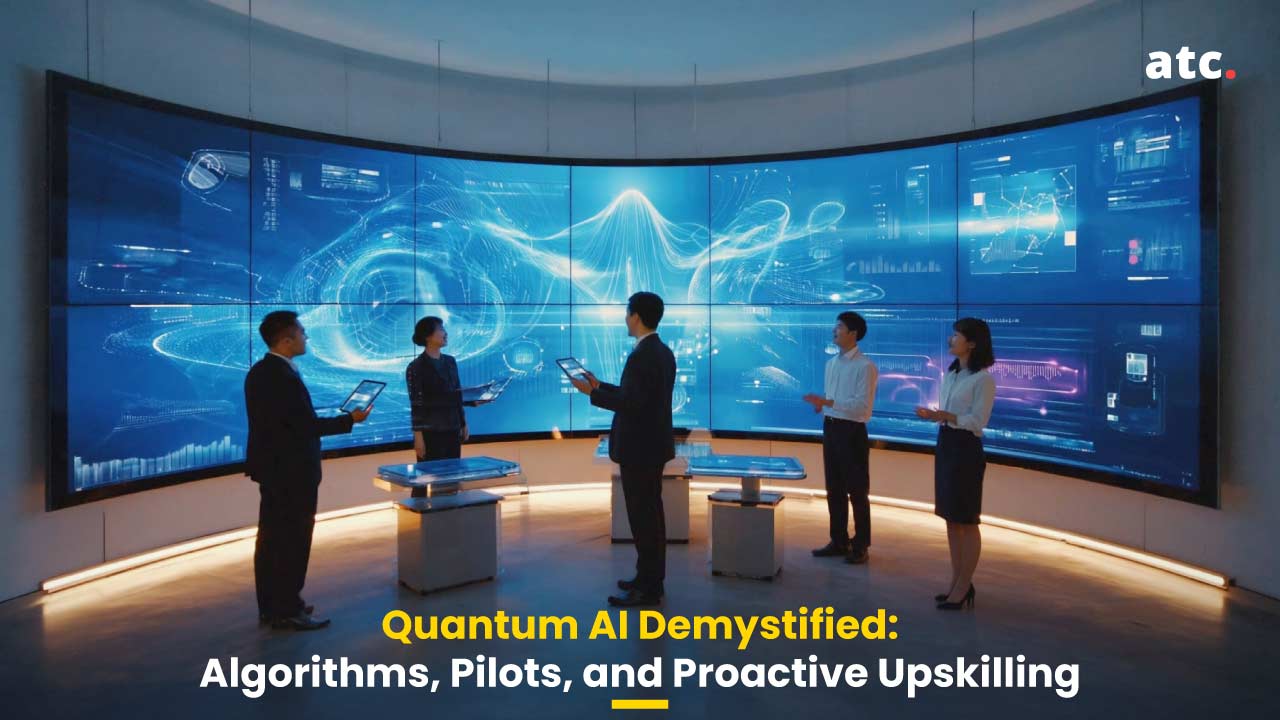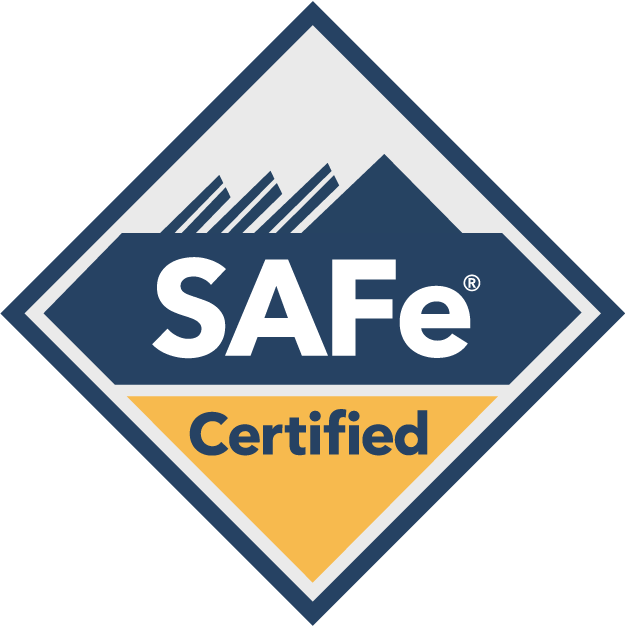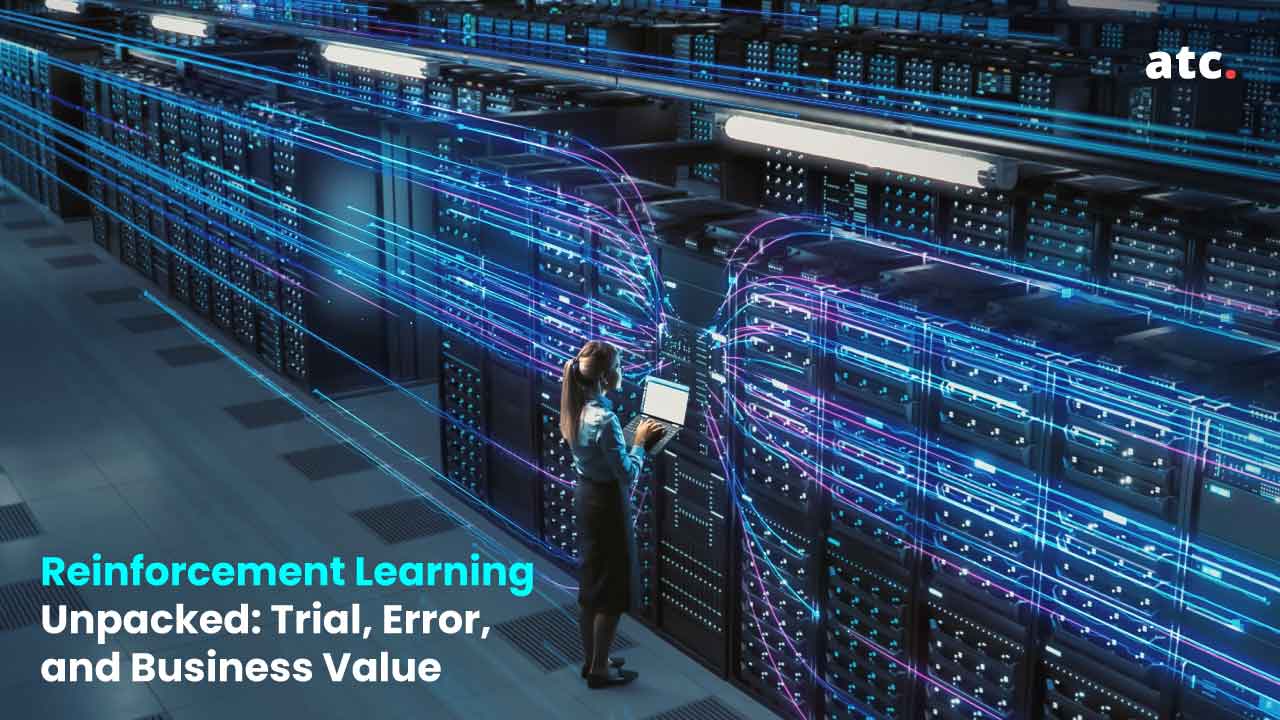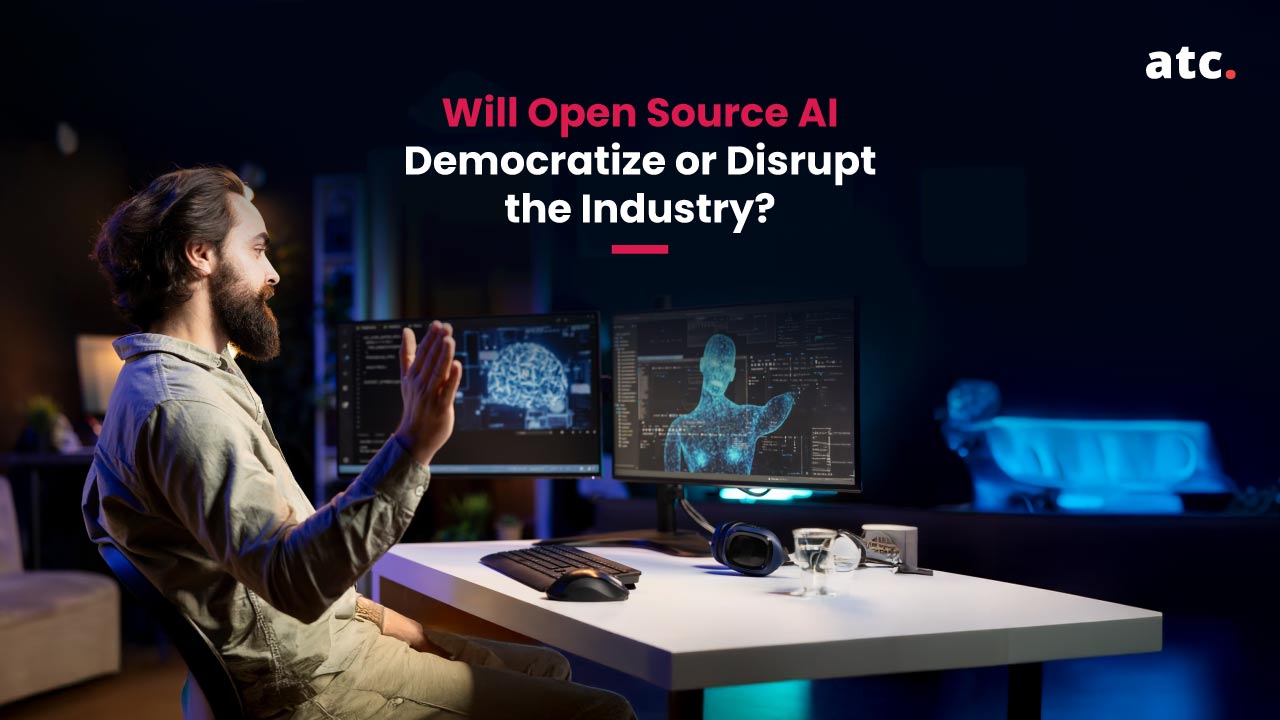Subscribe to the blog
Quantum computing is poised to revolutionize AI through the use of quantum bits, enabling complex calculations at speeds previously unimaginable (Gartner, 2024). With leaders facing more intimidating data challenges, quantum AI will come to deliver turbocharged AI capabilities that conventional systems can't. In this article, we explain how quantum AI could revolutionize industries, outline game-changing applications, address challenges, and offer steps to prepare your business for this next frontier.
The second quantum revolution is underway, shifting from witnessing quantum effects to designing qubits for computing and communication (MIT for a Better World 2024). Investment and research are gaining speed, with the pack leaders racing to deliver quantum advantage. For top executives, the time is now to grasp how quantum computing can enhance AI and release new value for the business.
Classical AI is based on deterministic processors that have difficulty with exponentially complex problems. Quantum AI combines quantum algorithms with AI processing to peer through enormous solution spaces in parallel. The combination can decrease training time dramatically and improve model performance on problems such as optimization and simulation.
The Science Behind Quantum AI:
- Quantum Bits and Classical Bits:
Under classical computing, a bit can be only one of two definite values—0 or 1, confining computation to sequential testing of alternatives. On the other hand, a qubit exploits the superposition principle to store 0 and 1 at the same time as a linear combination of states (|0⟩ and |1⟩). If several qubits are entangled, actions on one have an immediate effect on their entangled counterparts, generating an exponential explosion of the space of computation (Microsoft Azure 2024). It is the source of quantum AI and allows the algorithms to attempt lots of routes to the answer in one pass of computation. As noise and decoherence are defeated through hardware advances, these quantum features will deliver exponentially larger AI workloads (IBM Quantum 2025).
- Key Quantum Algorithms:
Two of the leading variational quantum algorithms—the Variational Quantum Eigensolver (VQE) and the Quantum Approximate Optimization Algorithm (QAOA)—are proving crucial for future quantum-AI hybrids. VQE uses a parameterized quantum circuit to estimate the ground state of a molecular Hamiltonian, iteratively optimizing parameters with a classical optimizer to reduce expected energy. QAOA, on the other hand, alternates between employing a problem Hamiltonian and a mixing Hamiltonian, varying angles to find near-optimal solutions to combinatorial problems (ScienceDirect 2024). Both algorithms reflect the quantum-classical cycle, with quantum processors being used for state preparation and evaluation and classical systems doing the heavy lifting in parameter optimization. Such synergy is critical to enabling useful quantum AI benefits in the NISQ era.
- How Quantum Speed-Ups Might Make AI Training Better
By integrating variational circuits into training AI models, quantum processors can scan loss landscapes over exponentially many parameter settings in parallel. Initial research suggests potential accelerations for deep network gradient estimation, reducing training epochs by orders of magnitude on certain optimization problems (SpinQ 2025). Interference effects can also enhance correct solution amplitudes, enhancing convergence on problems such as portfolio optimization and molecular simulation (Wikipedia 2025). With increasing qubit fidelities and circuit depths, these quantum accelerations will become a reality instead of a promise in supercharged AI workloads. Integrating these algorithms into current AI platforms positions for tomorrow's quantum-augmented applications.
Transformational business application scenarios:
- Research in Pharmaceuticals and Biological Sciences
Pharmaceutical executives are collaborating with quantum pioneers to speed molecular simulations and condense R&D cycles by years. Pfizer's partnership with XtalPi employs AI‑augmented cloud quantum simulations to model crystal structures in days instead of months, narrowing down lead drug candidates prior to lab synthesis (Pfizer 2024). In a parallel initiative, the Cleveland Clinic and IBM introduced the first quantum computer aimed at healthcare, allowing scientists to model intricate biomolecular interactions to cure cancer, Alzheimer's, and diabetes (IBM Research 2021). Companies Pasqal and Qubit Pharmaceuticals have proved quantum‑accelerated protein‑ligand binding models, efficiently placing water molecules into binding sites using neutral‑atom hardware (Pasqal 2024). These instances show how quantum AI is revolutionizing lead optimization and will probably halve the cost and duration of drug discovery over the next decade.
- Financial Modeling and Risk Analysis:
Investment banks are testing quantum AI to enhance sophisticated derivatives valuation and risk aggregation. Goldman Sachs's quantum research brief outlines hybrid quantum‑classical approaches used for option pricing, providing better valuations in turbulent market environments. IBM's Watsonx platform roadmap favors portfolio optimization as a top use case, with quantum‑augmented neural networks used to match risk and reward on thousands of assets in real time (IBM Community 2025). Initial benchmarks indicate these approaches will minimize computational flaws in stress‑testing applications, allowing for more robust capital deployment. As fidelity and qubits increase, turbocharged AI for finance will move from pilot projects to production‑grade risk engines.
- Supply Chain Optimization:
Automakers and logistics executives are investigating quantum AI for routing and scheduling at scale. Research by DHL lists the application of quantum annealing to optimize the last‑mile delivery and parcel packaging as much as possible, with rapid computation and responsive re‑planning in case of disruptions (DHL Logistics 2024). Volkswagen's "Quantum Shuttle" pilot at Web Summit managed nine buses in real time, optimally solving more than 1,200 problems and reducing waiting times for passengers with a D‑Wave annealer (Volkswagen Group 2019). Future applications can spread to fleet management, inventory placement, and multiple modes of transport, unleashing resilience from unplanned shutdowns. Quantum computing combined with AI‑based demand forecasting allows companies to reveal near‑optimal supply chain configurations in seconds.
Challenges and Facts:
- Hardware Maturity & Error Correction
Existing quantum processors are still in the NISQ regime, with qubit number and coherence time restricting broad application. Error rates need to fall substantially before fault-tolerant quantum computing is possible (DOE Quantum 2024).
- Talent Shortages and the Learning Curve:
Quantum talent is scarce, and learning barriers are steep. Reskilling quantum teams in quantum basics and programming paradigms is critical.
Anchoring a Quantum-Ready Team
Building in-house quantum skills is critical as the need for quantum professionals accelerates to 250,000 jobs by 2030 (Business Insider 2025). Begin by bringing in quantum champions from R&D, IT, and data science, and establish cross-functional centers of excellence to spearhead pilot initiatives (AWS Quantum Embark 2024). Collaborate with universities and industry consortia with hands-on labs and certification assistance to speed up learning curves. Incentivize ongoing learning through formal pipelines and credits in your L&D system. Incorporating quantum literacy across teams allows you to test new technologies and incorporate them into strategic roadmaps.
- Applying Quantum Simulators Today
Quantum simulators allow your teams to debug and prototype algorithms on known infrastructure before accessing real hardware. Qiskit Aer offers noise‑modelled simulations of IBM quantum processor behavior, enabling exploration of circuit depths and error mitigation techniques (IBM Qiskit 2025). Local test modes in Qiskit allow developers to execute hundreds-of-qubit state vector simulations on high‑performance clusters, exposing bottlenecks before hardware execution (IBM Quantum Documentation 2025). Amazon Braket's SV1 and DM1 simulators also enable large‑scale testing of variational algorithms on a pay‑as‑you‑go model, allowing for rapid iteration on classical compute resources (AWS Braket 2025). Integration of these tools into current MLOps pipelines simplifies hybrid quantum‑classical development.
- Partnership with Cloud Quantum Providers:
Cloud providers provide managed quantum services that reduce infrastructure overhead and speed time to insight. Amazon Braket provides single-point access to gate-based QPUs from IonQ, Rigetti, and QuEra, and built-in simulators, with pay-per-use and priority hardware queues (AWS Braket 2025). IBM Quantum's cloud platform supports free tiers and enterprise plans with dedicated QPUs and Qiskit Runtime for high-throughput workloads (IBM Quantum Platform 2025). Microsoft combines hardware from Honeywell and IonQ with its own simulators, with smooth integration into the Azure ecosystem for data pipelines. Confirmation of SLAs, device portfolios, and integration support from each provider ensures your proofs of concept scale into mission-critical deployments.
Assembling a Quantum‑Ready Team:
Developing in‑house quantum expertise is essential as hybrid AI‑quantum expertise rises — quantum‑literate and AI‑competent jobs are projected to grow by 40% annually through 2028 (Business Insider 2025). Start by recruiting quantum champions in R&D, IT, and data‑science teams and creating cross‑functional "Quantum Guilds" to pilot small projects. Support in‑house education with targeted outside initiatives.
The Significance of Upskilling through ATC's Generative AI Masterclass:
The Generative AI Masterclass: Creating AI Agentic Workflows from Ground Up by ATC provides a 20‑hour, 10‑class, 2–3 weeks masterclass for beginners and business leaders. Students will:
- Describe artificial intelligence agentic workflows and relate them to applicable business cases.
- Understand big language models, APIs, and automation tools.
- Develop basic AI agents with low‑code/no‑code platforms.
- Create end-to-end AI-driven processes that solve actual workplace problems.
This masterclass brings the theory to practice, enabling your team to design ethical, impartial AI solutions today—and sets the stage for incorporating quantum AI in the future.
- Implementing Quantum Simulators Today:
Before applying physical QPUs, quantum simulators enable your teams to prototype and experiment with algorithms on known hardware. IBM's Qiskit Aer provides noise‑modelled simulations that mimic real hardware, enabling you to try circuit depths and error‑mitigation techniques. Amazon Braket's SV1 and DM1 simulators provide large‑scale variational algorithm testing on a pay‑as‑you‑go model, enabling you to rapidly iterate on classical clusters. Supporting these simulators in your existing MLOps workflows accelerates the path from proof‑of‑concept to live hybrid quantum‑classical workflows.




